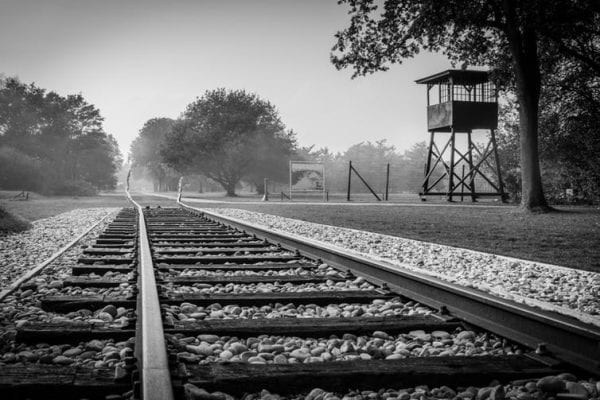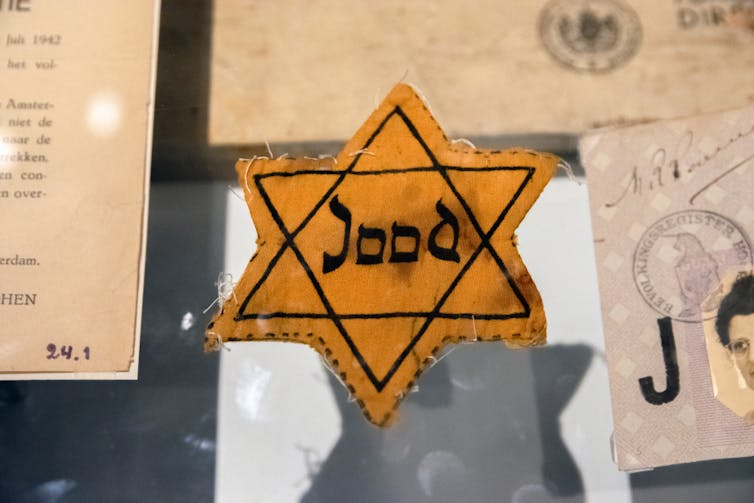 Kamp Westerbork.
Kamp Westerbork.Shutterstock/Arjen Dijk
Peter Tammes, University of Bristol
The diarist Anne Frank was born almost 90 years ago. But she lived for only 15 years, dying in a Nazi concentration camp shortly before it was liberated by Allied forces in 1945. To mark the anniversary of her birth, a new collection of Frank’s writing has been published, and a “novel” version of her famous diary released in Germany, Switzerland and Austria.
Anne and her family had left Nazi Germany for Amsterdam and were among the 140,000 or so Jews living in the occupied Netherlands. Her diary recounts the harrowing details of hiding to escape Nazi persecution until the family was arrested and deported.

Shutterstock/Andreia Baptista
Anne, her sister and her mother were among the around 73% of Jews living in the occupied Netherlands who did not survive Nazi persecution. But who survived and who didn’t varied significantly across the country.
Previous research has shown huge variation in Jewish death rates in different Dutch locations over the course of World War II. Updated figures in my recent article
show about 75% of Jews in Amsterdam perished, while in Eindhoven, Utrecht, The Hague and Assen, the respective death rates were around 38%, 55%, 70% and 89% respectively.
Those differences in death rates raise interesting questions about who was most at risk of persecution and why this was the case. But answering those questions requires a new way of looking at the data.
In recent decades, an increasing amount of information on the persecution of Jews during World War II has become available. Techniques in analysing that data have also improved. Yet within Holocaust literature, studies using statistical methods are still unusual.
As a social scientist with an interest in the persecution of Jews and their position in Dutch society before the war, I feel that using statistics could vastly improve our understanding of the Holocaust and the variation in death rates.
In my recent study, I applied epidemiological methods to data for more than 118,000 Jews from 102 retrieved municipal Nazi registration lists – that’s about 84% of all Jews living in the Netherlands in 1941.
Using socio-demographic information about both the Jewish inhabitants and where they lived, I examined the influence of individual and local characteristics on chances of deportation to Nazi concentration and killing camps.
What stood out was that Jews living in areas with a higher proportion of collaborating Dutch policemen and fewer potential hiding opportunities were more likely to be deported. Also, Jews living in areas with a stronger sense of segregated living were more likely to be deported. Within such areas, Nazi regulations to isolate Jews might have been more acceptable and thereby facilitated deportation.
Jews living in areas with relatively more Catholics were more protected against deportation. The Catholic church in the Netherlands protested strongly against the deportation of Jews in July 1942. The Nazi sanction to deport Jewish converts to Catholicism might have strengthened Catholics’ resistance to the Nazi persecution of Jews.
On an individual personal level, the following groups of people were less likely to be deported: females, those aged five and under, those aged 15-30, Jewish migrants, Jewish converts to Christianity, and Jews in mixed marriages.
The results suggest that Nazi occupiers relied on local non-Jewish assistance or facilitation to persecute Jews. Meanwhile, the chances of a Jewish person being deported depended to a large extent on the Nazis’ own regulations, which privileged groups such as those married to non-Jews, converted Jews, and which did not require young children to wear the yellow star of David.
These privileges provided vital opportunities for mixed-married and converted Jews to mobilise their non-Jewish contacts for help and gave younger children better opportunities to hide. The reduced deportation chances of Jewish migrants might be related to these refugees’ increased awareness of persecution and better ways to acquire temporary protected status through their positions in the Jewish council and in transit camp Westerbork.

Shutterstock
For those who were deported, the risk of subsequent death differed over time depending partly on the deportation train’s destination, with the highest risk in September and October 1942 and in July 1943. Those at lower risk of death included Jews who were aged 15-30, in mixed marriages, and converts.
Whereas deported men had a reduced risk of death until the summer of 1943, thereafter women showed reduced risk of death. This latter result suggests that in the earlier stage of the war, men were more often selected for works in the camps than women. The men survived while they were considered able to work, although this selection did not offer long term protection.
The stronger decimation of Jews aged six to 15 might have affected the post-war community reconstruction – for example, in Amsterdam, where the proportion of Jewish inhabitants was reduced from about 10% before the war to less than 3% afterwards.
Among Amsterdam Jews, the survival rate was higher for the highest social classes.
Jews in these classes, such as doctors, showed a stronger tendency to assimilate with non-Jewish society, with one in four having abandoned Judaism. Higher survival rates among mixed married and foreign born Jews also contributed to a changed composition of the Jewish community after the war.
Conflict and violence
There is plenty we can learn from all of this. Many decades after World War II ended, the World Health Organisation declared acts of violence to be a leading global public health problem. Violent conflict is still among the top public health issues in the world, with related deaths the top ranked cause of preventable loss of life.
Public health researchers, epidemiologists and others who study patterns and causes of deaths during and after violent conflict or genocide, can help to increase our understanding of violence.
Identifying factors and situations of increased risk of victimisation in historical genocide cases could inform epidemiological (and other) studies of more recent global events. My sincere hope is that they will help to improve interventions to lessen the impact of violence in future conflicts and genocides.![]()
Peter Tammes, Senior Research Associate, University of Bristol
This article is republished from The Conversation under a Creative Commons license. Read the original article.
